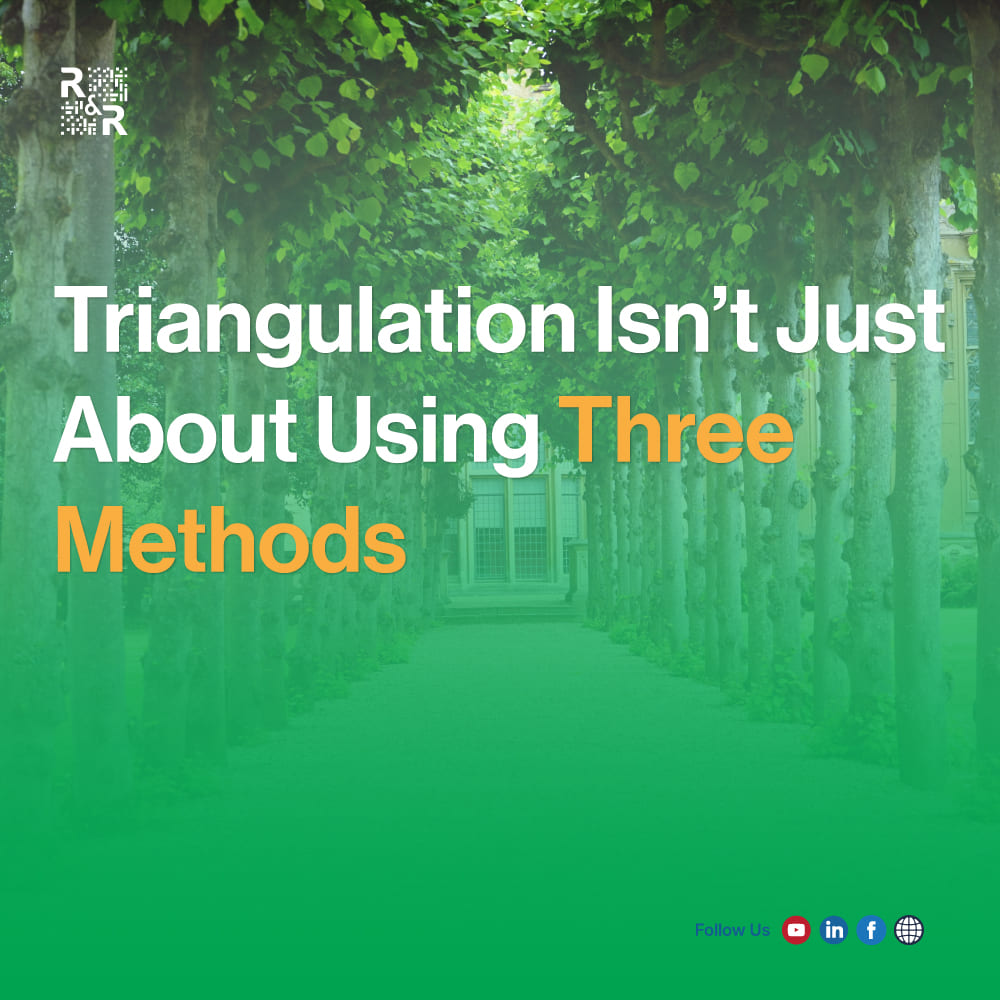Understanding the Real Meaning of Triangulation
In academic and applied research, triangulation is often misunderstood. Many believe it simply means using “three methods” to collect data. However, triangulation is not about the number three—it’s about cross-verifying evidence from multiple sources or perspectives to improve the credibility, reliability, and depth of research findings.
This approach prevents researchers from relying on one-sided interpretations, ensuring that findings reflect a more comprehensive reality.
As Denzin (1978) first outlined, triangulation is a strategy to validate results through convergence of evidence. Over time, this principle has become essential across social science, psychology, education, and policy research.
Why Triangulation Is Misunderstood
Many early-career researchers mistakenly treat triangulation as a methodological checklist. They assume that applying three techniques—like surveys, interviews, and focus groups—is enough to ensure robustness.
But the essence of triangulation lies in corroborating insights, not just collecting data. It’s about testing the consistency of findings through different frameworks, perspectives, and methods.
Without this deeper understanding, researchers risk producing data-rich but interpretation-poor studies.
The Four Core Types of Triangulation
1️⃣ Data Triangulation
Data triangulation involves using information from different sources, times, or locations. For instance, when studying employee motivation, collecting responses from multiple departments or time periods helps confirm that results aren’t context-specific.
This approach boosts external validity, ensuring findings apply across diverse settings.
2️⃣ Investigator Triangulation
No matter how experienced, every researcher carries cognitive bias. Investigator triangulation combats this by involving multiple analysts who interpret the same dataset independently.
By comparing interpretations, researchers can identify blind spots, improve consistency, and reduce subjective influence. This approach is especially vital in qualitative research and peer-reviewed consultancy work.
3️⃣ Theory Triangulation
Theory triangulation applies multiple theoretical perspectives to interpret a dataset. For instance, studying consumer behavior using both behavioral economics and psychological frameworks can reveal nuanced patterns hidden from a single lens.
This not only enriches analysis but also broadens theoretical contributions to the field.
4️⃣ Methodological Triangulation
Methodological triangulation combines quantitative and qualitative methods to deliver a well-rounded understanding of phenomena. For example, survey data may quantify trends, while interviews explore the “why” behind them.
This dual approach improves explanatory depth and ensures findings are both statistically significant and contextually meaningful.
Why Triangulation Matters in Research & Consulting
In today’s data-driven environment, research decisions shape business, policy, and academic success. However, findings based on single-method research are often fragile. Triangulation addresses this issue by:
- Increasing credibility and validity of results.
- Reducing bias and methodological limitations.
- Enhancing interpretive richness through diverse perspectives.
- Making findings more actionable for decision-makers.
Triangulation vs. Single-Method Reliability
| Research Approach | Bias Risk | Validity | Insight Depth | Practical Use |
| Single Method | High | Moderate | Low | Limited |
| Triangulated Approach | Low | High | High | Broad |
This visual comparison demonstrates how triangulation strengthens reliability and interpretive power.
References
- Denzin, N.K. (1978). The Research Act: A Theoretical Introduction to Sociological Methods.
- Patton, M.Q. (2015). Qualitative Research & Evaluation Methods. SAGE Publications.
- Flick, U. (2018). An Introduction to Qualitative Research. SAGE.
- Fielding, N., & Fielding, J. (1986). Linking Data. Sage Publications.
- SAGE Research Methods: Triangulation Overview
Final Thoughts
Triangulation is not a rigid formula but a strategic mindset—a commitment to validating truth through multiple lenses. It moves research from mere data collection to integrated evidence interpretation.
At Research & Report Consulting, we strengthen the robustness of your findings with advanced triangulation strategies—helping you make data-driven, defensible decisions.
💭 How do you apply triangulation in your research or consulting projects? Share your approach below—we’d love to hear your insights.
Want research service from Research & Report experts? Please contact us.

